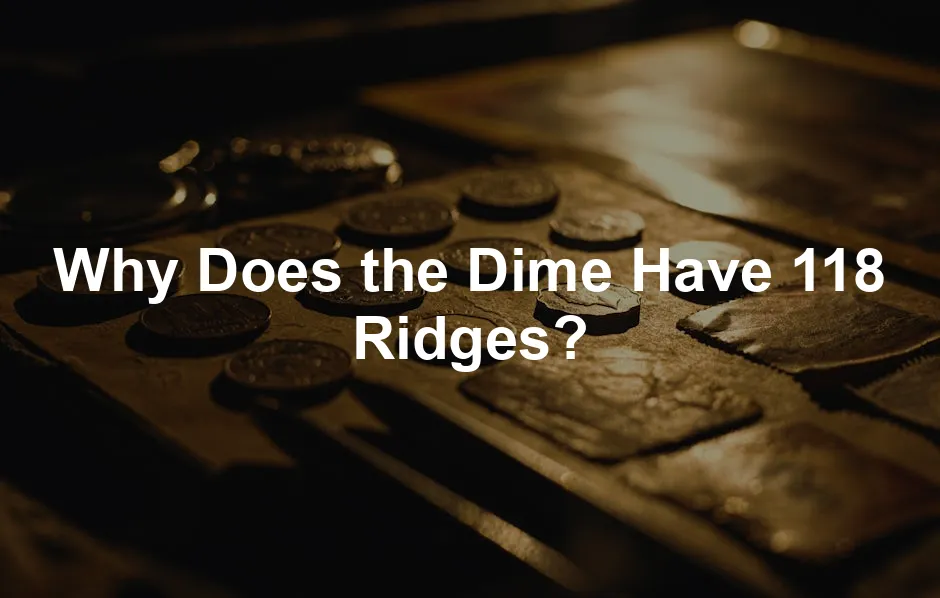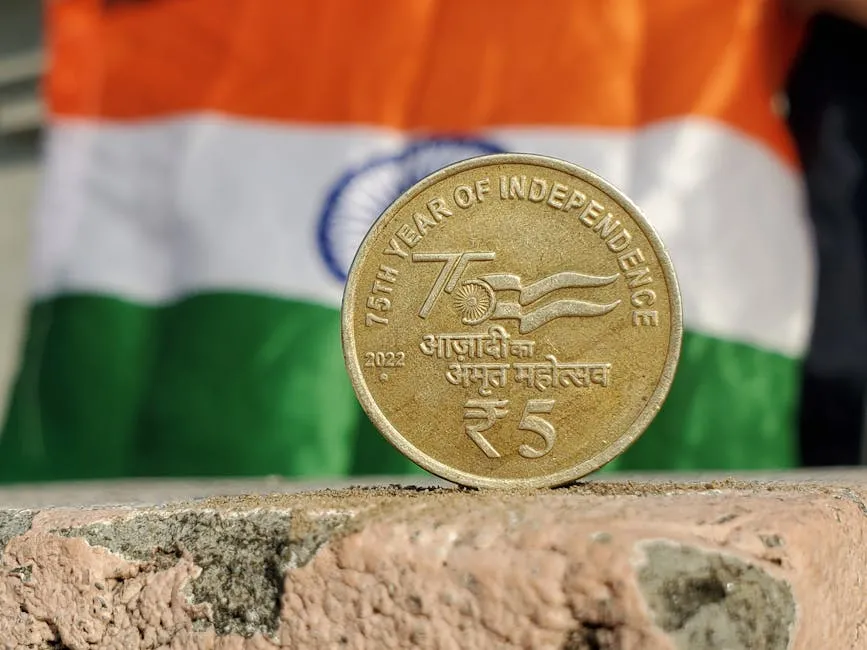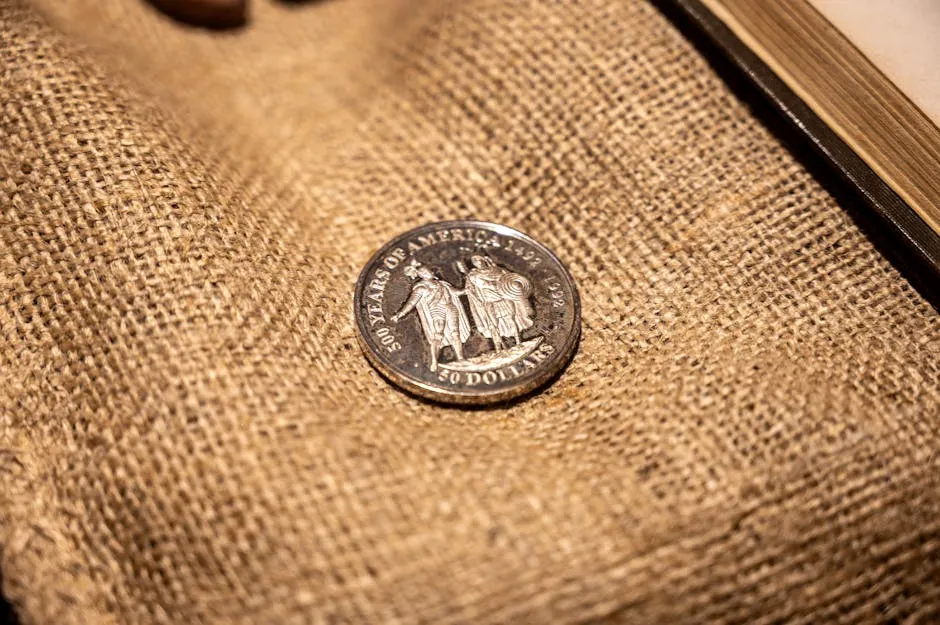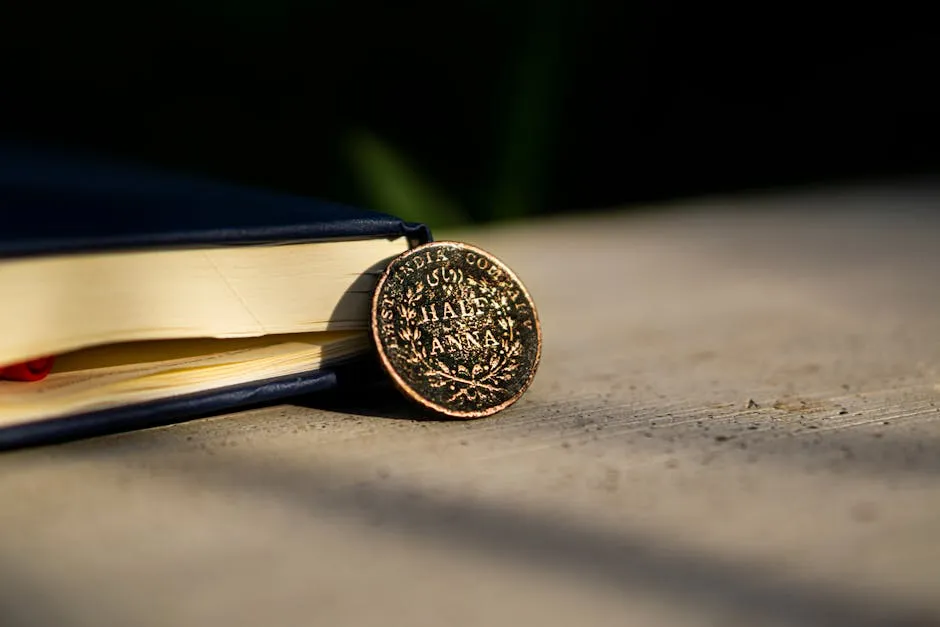
Why Does the Dime Have 118 Ridges?
Introduction
Have you ever noticed the unique design of a dime? Among its features, the dime boasts 118 ridges, also known as reeding. These ridges aren’t just for show; they play a significant role in the coin’s history and security. Understanding why dimes have these features reveals much about our monetary system.
While you’re pondering the artistry of coins, why not take your collection to the next level? A Coin Collector’s Album is a fantastic way to showcase your prized possessions. Say goodbye to shoeboxes and hello to an organized collection that impresses friends and family!
Summary and Overview
The U.S. Mint was established in 1792, producing its first coins shortly after. Initially, dimes were made of precious metals like silver. The introduction of reeding on coins, including dimes and quarters, aimed to prevent counterfeiting and coin clipping. Over time, the Mint transitioned from precious metals to more modern materials for coinage. This article will explore the reasons behind the dime’s 118 ridges.
Speaking of coin collecting, you might find it helpful to have a Coin Sorting Tray to keep your coins organized while you sort through them. No more fumbling around for that elusive penny—everything will be at your fingertips!

The Historical Context of Coin Minting
The United States Mint opened in 1792, and its first coins were minted in Philadelphia. These early coins included copper cents, which marked a new era in American currency. As the nation grew, the need for reliable coinage became crucial. Silver and gold were the primary materials used for higher denominations, including dimes and quarters.
However, these coins faced significant challenges. One prevalent issue was coin clipping, where individuals would shave off edges to collect and sell precious metal. This practice posed a threat to the integrity of coin value. To combat this, the Mint introduced reeded edges on coins, making it easier to detect tampering.
The first silver dimes were minted under the Coinage Act of 1792, which set standards for coin composition. These coins were designed to maintain their worth and deter fraud. As the Mint evolved, so did the materials used in coins. By 1965, the composition of dimes changed from silver to a copper-nickel blend, but the ridges remained. They continue to serve as a reminder of the coin’s rich history and the ongoing battle against counterfeiting.
And while you’re diving into the world of coins, why not enhance your experience with a U.S. Mint Coin Set? It’s like having a piece of history right in your pocket! Perfect for collectors and history buffs alike.

Understanding the reasons behind the dime’s design helps us appreciate the craftsmanship involved in minting coins. The 118 ridges not only enhance security but also connect us to the historical practices of coin minting.
What Are Ridges and Why Are They Important?
Have you ever paid close attention to the edges of a dime? Those tiny grooves, known as reeding, serve multiple essential purposes. First and foremost, reeding is designed to prevent coin clipping. In the past, people would shave off metal from coins to accumulate precious metals like silver. This practice threatened the integrity of the currency. By adding ridges, the U.S. Mint made it easier to spot any tampering. A clipped coin will show clear signs of alteration, alerting users to potential fraud.
But the benefits of ridges don’t stop there. They also enhance security by making counterfeiting more difficult. A smooth edge is far easier to replicate than one with distinct grooves. This intricate design acts as a deterrent for would-be fraudsters. The ridges serve as a tactile feature, allowing individuals to identify coins through touch, which is especially helpful for those who are visually impaired.
In essence, the ridges on dimes are not just a design choice. They are a vital security feature that reflects a long history of protecting the value of currency. Understanding their purpose adds depth to our appreciation of coins.

And if you’re looking for a way to magnify your coin collection experience, consider a Coin Magnifier! It’ll help you see every detail of those beautiful designs up close and personal.
How Many Ridges Are on Other U.S. Coins?
The dime stands out with its 118 ridges, but it’s not the only U.S. coin with a reeded edge. Quarters follow closely behind with 119 ridges, while half dollars boast an impressive 150 ridges. The Susan B. Anthony dollar, though not as commonly used, has 133 ridges.
These variations are not arbitrary; they reflect the coins’ sizes and denominations. Interestingly, the number of ridges can change across different minting periods. For instance, some older coins minted at different facilities, such as the Carson City Mint, had different ridge counts. This inconsistency adds an intriguing layer to coin collecting and numismatics, as collectors seek out these unique features.
Understanding the ridge counts of various coins can enhance your appreciation for them. It opens a window into the history of U.S. currency and the meticulous nature of coin design.

And while you’re at it, if you want to keep your coins in pristine condition, check out a Coin Cleaning Solution. It’s essential for maintaining the beauty and value of your collection!
The Composition of Modern Dimes
The composition of dimes changed significantly after 1965. Before this year, dimes were made of 90% silver. This high silver content was one reason for the introduction of reeding. The Mint aimed to combat coin clipping and protect the value of silver coins.
Since 1965, dimes have switched to a copper-nickel blend, eliminating precious metals from the equation. You might wonder if this change affects the need for ridges. Surprisingly, the answer is no. Even without silver, ridges remain important. They still deter counterfeiting and fraud.
Additionally, the tactile feature of ridges offers practical benefits for the visually impaired. Coin design has evolved, but the enduring presence of ridges reflects a commitment to security and accessibility. Thus, even in a world where most transactions occur digitally, these features remind us of the rich history behind our currency.

To make weighing your coins a breeze, consider investing in a Coin Scale for Weighing. It’s perfect for collectors who want to ensure their coins are accurately weighed and valued!
The Evolution of Coin Design
Coin design has changed significantly over the centuries. Early coins were often made of precious metals like gold and silver. The U.S. Mint was established in 1792, setting a standard for coinage. Initially, dimes were minted using these valuable materials. However, as counterfeiting became more common, the Mint had to adapt.
Reeding, or the presence of ridges, was introduced to help combat fraud. This feature made coins harder to counterfeit. Other countries also adopted reeding for similar reasons. The practice became a global standard, with many nations recognizing its importance.
One notable figure in this evolution was Isaac Newton. As Warden of the Royal Mint in the late 1600s, he implemented reeded edges to prevent coin clipping in Great Britain. This practice spread to other countries, including the U.S. The adoption of reeding has played a critical role in the history of coin design, ensuring security and trust in currency.
Today, while the composition of coins has shifted, the ridges remain. They serve not only as a security feature but also as a nod to the rich history of coinage. Understanding this evolution helps us appreciate the artistry and thought behind modern coins.

Coin Clipping: A Historical Perspective
Coin clipping was a widespread practice in earlier centuries. Individuals would shave small amounts of metal from coins to collect precious materials. This method not only devalued coins but also undermined public trust in currency. As a result, the integrity of monetary systems was at risk.
To address this issue, the U.S. Mint introduced reeded edges. These distinct grooves made it easier to identify tampered coins. A clipped coin would show clear signs of alteration, alerting users to potential fraud. This innovation was crucial in maintaining the value of currency.
The economic impact of coin clipping was significant. When people shaved coins, they essentially created counterfeit currency. This practice led to loss of value and trust in coins, making it essential for governments to act. By implementing reeding, the Mint effectively countered this threat.
Even today, the ridges on coins serve as a reminder of these historical challenges. Although coin clipping is less of an issue now, the importance of security features remains. The legacy of reeding continues to influence modern coin design, ensuring that currency remains reliable and trusted.

The Role of Reeded Edges Today
Have you ever wondered why coins like dimes still have ridges? Even in our increasingly digital world, these features remain relevant. Reeded edges serve a crucial purpose in modern currency, and their significance goes beyond aesthetics.
First, let’s talk about security. Reeded edges make it harder for counterfeiters to replicate coins. A smooth edge is far easier to mimic, while the distinct grooves on dimes and other coins create an intricate design that’s tough to forge. This makes it easier for both users and merchants to spot fakes quickly.
Additionally, reeding helps prevent fraud. While we no longer deal with coin clipping as extensively as in the past, having these ridges allows for a tactile way to identify coins. This is particularly beneficial for individuals who are visually impaired. The ridges provide a way for them to distinguish between different coins by touch alone.
Moreover, in today’s fast-paced economy, every detail counts. As we transition to digital payments, the physical coins we carry still hold value. Understanding the design features of coins, including their ridges, helps us appreciate the craftsmanship involved in minting. Each ridge tells a story of history and security.
So next time you handle a dime, take a moment to appreciate those 118 ridges. They play an essential role in keeping our currency secure and accessible.

Conclusion
In summary, the ridges on a dime are no mere coincidence. They reflect a rich history of coin design, security measures, and accessibility. Understanding why dimes have 118 ridges gives us insight into our monetary system and the evolution of currency.
As you go about your daily life, pay attention to the details of coins. Each one carries a story, from its design to its purpose. By appreciating these features, you connect with a fascinating part of history that continues to impact our economy today. So next time you reach for your change, remember the significance behind those tiny grooves!
If you’re a fan of cooking, you might want to check out an Instant Pot. It’s a game-changer in the kitchen, making meal prep faster and easier!
FAQs
Why do dimes have ridges?
Dimes have 118 ridges, known as reeding, primarily for security. These grooves help prevent coin clipping, a practice where individuals shave off edges to collect precious metal. Historically, dimes were made of silver, making them targets for fraud. By adding ridges, the U.S. Mint made it easier to spot altered coins. The ridges serve as a visual and tactile feature, enhancing coin security.
How many ridges does a quarter have?
A quarter features 119 ridges, just one more than the dime. This slight difference in ridge count shows how design varies among U.S. coins. Both coins use reeding for similar security purposes, helping to deter counterfeiting and fraud. Learn more about quarters and their unique features.
Are there other coins with ridges?
Yes, several U.S. coins have ridges. Here’s a quick rundown: Dime: 118 ridges, Quarter: 119 ridges, Half Dollar: 150 ridges, Susan B. Anthony Dollar: 133 ridges. Each coin’s design incorporates ridges for security and identification.
Why was the reeding introduced?
Reeding was introduced to combat coin clipping and counterfeiting. In the past, coins were made from precious metals, making them vulnerable to fraud. The U.S. Mint added ridges to help identify tampered coins. This feature made it much harder to shave metal without detection, thereby protecting coin value.
What materials are used in modern dimes?
Today, modern dimes are made from a copper-nickel blend. This change occurred after 1965 when the Mint shifted away from precious metals. While they no longer contain silver, dimes still retain their ridges for security and to aid visually impaired individuals.
Do all countries use reeded edges on coins?
Not all countries use reeded edges. While many nations have adopted this design for security, practices vary. Some countries prefer smooth edges, while others may use different features to prevent counterfeiting. The choice often depends on the specific needs of a country’s currency system.
How does reeding help visually impaired individuals?
Reeding provides a tactile feature that helps visually impaired individuals identify coins by touch. The distinct grooves allow those with sight difficulties to differentiate between coins easily. This design choice enhances accessibility in everyday transactions, ensuring that everyone can engage with currency.
Please let us know what you think about our content by leaving a comment down below!
Thank you for reading till here 🙂
Understanding the significance of the 118 ridges on a dime connects us to the historical practices of coin minting. Learn more about why dimes have 118 ridges.
And if you’re looking for some fun, why not grab a Board Game for Family Fun? Perfect for those rainy days when you want to bond with your loved ones!
All images from Pexels




